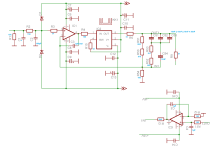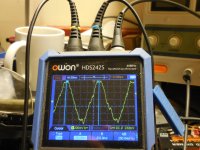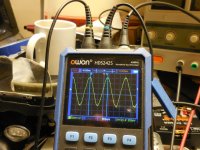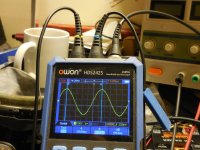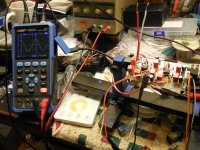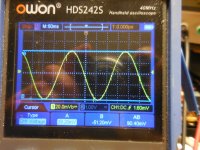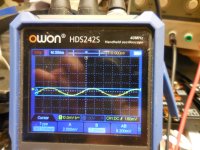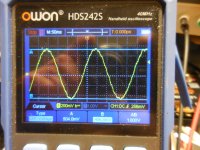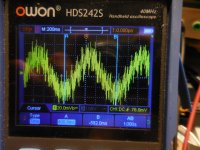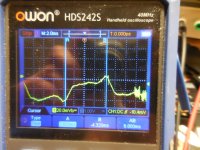with or without servo ?BTW @hbtaudio , I already mentioned the test circuit is the Openamp without the LT1010.
good.All the documentation is available for free on my web page.
no!Do you provide such service as well??
I hope I have read all the component values correctly from the BOM file in my haste.
So, this is your measurement circuit for the DUT ! That's all I wanted to know.
#
With the result that an LT1028 is of course worse than an OP27 or an OPA627 in this circuit.
So, this is your measurement circuit for the DUT ! That's all I wanted to know.
#
With the result that an LT1028 is of course worse than an OP27 or an OPA627 in this circuit.
Attachments
In any circuit when there is a MM cartridge at the input.With the result that an LT1028 is of course worse than an OP27 or an OPA627 in this circuit.
Please stop trolling, the full documentation of the Openamp is on my web page, with bill of materials and Gerber files. You are posting a partial schematics only. And the test circuit recently did not use the LT1010, it was omitted, which I repeated several times.
Openamp link: https://pmacura.cz/openphono.htm
Openamp at diyaudio: https://www.diyaudio.com/community/threads/openamp1-mm-phono-preamp-open-project.226508/
(project from the year 2012)
Once again, please stop trolling in this thread. I think it is time for me to take a break from diyaudio.com, again. It gives me nothing but useless debates.
Dear Pavel,
It is legitimate to ask a question and not "trolling". Especially when it's about totally harmless questions that can be answered quickly and easily. If I understand the thread creator correctly, everything here revolves around the use of the 1656 operational amplifier as an RIAA equalizer preamplifier - and this is actually a mundane topic, but nevertheless always exciting, in one way or another.
Incidentally, all the necessary (and often additional) information can usually be found in the (original) manufacturers' data sheets.
We can also find your great product, the OpenAmpOne, there - not quite one hundred percent, of course. But it is fair to say that you are providing a PCB for a well-known application note - no more and no less.
And that may also be said. Application notes are possible application examples that can be followed and are usually modified with slight adaptations to the specific task.
An LT1028 is totally unsuitable for the direct connection of an MM pickup, this is also (hidden) in the data sheet. However, this does not mean that this OP will not appear with an EQ example in the usual application possibilities. This component is not designed for high-impedance sources! And we've known this since this miracle OP made its debut on the market, so there's no need to lament it any longer.
That's why your noise analysis has a certain comparative appeal, but nothing more.
I hope that was clear and friendly enough - and it's absolutely no reason to be miffed or withdraw.
#
Are there still problems for the thread creator (JRA) that we can all solve together in order to implement a good phono EQ with the 1656 device?
All the best,
HBt.
It is legitimate to ask a question and not "trolling". Especially when it's about totally harmless questions that can be answered quickly and easily. If I understand the thread creator correctly, everything here revolves around the use of the 1656 operational amplifier as an RIAA equalizer preamplifier - and this is actually a mundane topic, but nevertheless always exciting, in one way or another.
Incidentally, all the necessary (and often additional) information can usually be found in the (original) manufacturers' data sheets.
We can also find your great product, the OpenAmpOne, there - not quite one hundred percent, of course. But it is fair to say that you are providing a PCB for a well-known application note - no more and no less.
And that may also be said. Application notes are possible application examples that can be followed and are usually modified with slight adaptations to the specific task.
An LT1028 is totally unsuitable for the direct connection of an MM pickup, this is also (hidden) in the data sheet. However, this does not mean that this OP will not appear with an EQ example in the usual application possibilities. This component is not designed for high-impedance sources! And we've known this since this miracle OP made its debut on the market, so there's no need to lament it any longer.
That's why your noise analysis has a certain comparative appeal, but nothing more.
I hope that was clear and friendly enough - and it's absolutely no reason to be miffed or withdraw.
#
Are there still problems for the thread creator (JRA) that we can all solve together in order to implement a good phono EQ with the 1656 device?
All the best,
HBt.
Attachments
What other thread?And in the other thread (the parallel thingy)
Marcel,It's either a damper or a low-pass, see the attachment (where I left out the op-amp supply connections and input and output connectors out of laziness). Rdamp and Cdamp are the new components.
My preference would be the right circuit because of the RF filtering and because you could use larger resistors than 3 ns/Cdamp if needed (or so I expect), but either should help if my hypothesis is correct. The left circuit has the advantage that you don't need to open any connections, just hook up something in parallel to the input, and it has a very small noise advantage.
Looking back into 2021 just how many posts went by before Your advice was taken and implemented...? 😡
Post #1 yes indeed. To my ears, the 627 was first, the 2107 second and the 1656 third place. #506 hasn't and won't be A/B'ed b/c it's set up for two singles. For #1 re the single 627 I was using a Cimarron double single-to-dual SMT op amp => DIP8 adapter (~$60) The two singles are mounted belly-to-belly on the adapter card and in the case of the 627 the assembly gets rather hot. How hot? Dunno, Overly warm for sure. So this time I'll use the old DIP8 "pulls" from the eBay guy's sound mixing board. A bargain @ $39 a pop. Btw, in 2009 DIPs were ~$50ea.JRA,
Have you compared the audio characteristics between preamps on #1 and #506?
And UPS has just now delivered the cheap single DIPs from Digikey I will use as debugging fodder. And a stainless steel fiber-loaded polymer enclosure with 3mm-thick walls.
My 627s are all DIP8, so I got some two-singles to one dual adapter, all DP8.
I looked into AE and found these:
https://www.aliexpress.us/item/1005003207414743.html?spm=a2g0o.productlist.main.27.2f3d1e0dE9NKV2&algo_pvid=e393cb7f-97b3-41fb-85c1-767b6e25fbcc&algo_exp_id=e393cb7f-97b3-41fb-85c1-767b6e25fbcc-13&pdp_ext_f={"order":"44","eval":"1"}&pdp_npi=4@dis!USD!2.08!2.08!!!2.08!2.08!@2101d9ee17424296097822264e0661!12000024663463145!sea!BR!166951577!X&curPageLogUid=YwwtgHRRgmAB&utparam-url=scene:search|query_from:
But you have to solder them yourself. Couldn't find the ones I got. Will try again and tell you.
Most of the opamps I have are DIP8, which I got from manufacturers when they sent samples. Pretty good stuff and legit.
Have a few newer opamps that came in SOIC8, singles and duals. Pity I can't use the AD797, because I have several of them.
I was telling Marcel that the first single device kit I got from AE is perfect for the RIAA preamp you put on #1. The passive parts have to be changed, but there's place of them, even if they are large polystyrenes.
Perhaps it's worth it assembling one with no HP filter.
The regulators on board are 7X15, and all the connecting gear is included. Passive parts have to throw out though.
I looked into AE and found these:
https://www.aliexpress.us/item/1005003207414743.html?spm=a2g0o.productlist.main.27.2f3d1e0dE9NKV2&algo_pvid=e393cb7f-97b3-41fb-85c1-767b6e25fbcc&algo_exp_id=e393cb7f-97b3-41fb-85c1-767b6e25fbcc-13&pdp_ext_f={"order":"44","eval":"1"}&pdp_npi=4@dis!USD!2.08!2.08!!!2.08!2.08!@2101d9ee17424296097822264e0661!12000024663463145!sea!BR!166951577!X&curPageLogUid=YwwtgHRRgmAB&utparam-url=scene:search|query_from:
But you have to solder them yourself. Couldn't find the ones I got. Will try again and tell you.
Most of the opamps I have are DIP8, which I got from manufacturers when they sent samples. Pretty good stuff and legit.
Have a few newer opamps that came in SOIC8, singles and duals. Pity I can't use the AD797, because I have several of them.
I was telling Marcel that the first single device kit I got from AE is perfect for the RIAA preamp you put on #1. The passive parts have to be changed, but there's place of them, even if they are large polystyrenes.
Perhaps it's worth it assembling one with no HP filter.
The regulators on board are 7X15, and all the connecting gear is included. Passive parts have to throw out though.
Last edited:
Not really. I reinserted myself into the end of the 2021 thread asking for suggestions regarding the TI page 19 schemo of the 1656 used in a single stage pre amp. My complaints were not enough gain and a kind of whole-room feedback I called "room-slosh" I was experiencing requiring what I thought was a lot extra stuff as in up-front hi-pass sub-sonic stage + an input buffer that took the original to three stages which I didn't like. Carlmart came in with his own questions and desires and the two objectives went on in-parallel with Marcel at the helm. The result is a novel phono EQ design that a couple of us are now building - not necessarily with the 1656 b/c THAT will not work if paired with a crude-ish set-down, lift-up TT muting switch. But, that problem with the 1656 (and certain other audio op amps) was resolved back in 2021 by Marcel with a RC damper network placed across the RCA TT inputs. In a couple of days there will be at least one build of the new Marcel design that at least in my case gives me more gain + a built-in sub-sonic filter in one simple stage. We'll see.Are there still problems for the thread creator (JRA) that we can all solve together in order to implement a good phono EQ with the 1656 device?
You are a lucky man sir! DIP8 627s are long gone. That AE carrier is perfect. I've used those, too. Yea, solder them yourself. Hope that's not an issue. Remember to insert the two, 4-pin strips into a good socket, for drop-in alignment, before soldering.My 627s are all DIP8, so I got some two-singles to one dual adapter, all DP8.
I looked into AE and found these:
https://www.aliexpress.us/item/1005003207414743.html?spm=a2g0o.productlist.main.27.2f3d1e0dE9NKV2&algo_pvid=e393cb7f-97b3-41fb-85c1-767b6e25fbcc&algo_exp_id=e393cb7f-97b3-41fb-85c1-767b6e25fbcc-13&pdp_ext_f={"order":"44","eval":"1"}&pdp_npi=4@dis!USD!2.08!2.08!!!2.08!2.08!@2101d9ee17424296097822264e0661!12000024663463145!sea!BR!166951577!X&curPageLogUid=YwwtgHRRgmAB&utparam-url=scene:search|query_from:
But you have to solder them yourself. Couldn't find the ones I got. Will try again and tell you.
The 7x15 +/- 3-terminal regulators are not slouches but you will need a center-tapped 16Vac transformer. Good luck with the passives there in Brazil. Must be frustrating.
Didn't understand: "Couldn't find the ones I got. Will try again and tell you." What did you mean..?
Didn't understand: "Couldn't find the ones I got. Will try again and tell you." What did you mean..?
I meant that I did buy a few pre-soldered two into one DIP8 adapters, and bought them. If you need them I can find them for you at AE.
Still looking for "OPA1656 style into dip8", not those from Cimarron and preferably in China, to try SOIC8 duals like the opa1656, 1642 and 192.
I already have the R-type center tapped transformer and pre-drilled box that I bought also from AE. Now it's hard to find it in AE.
I meant that I did buy a few pre-soldered two into one DIP8 adapters, and bought them. If you need them I can find them for you at AE.
Still looking for "OPA1656 style into dip8", not those from Cimarron and preferably in China, to try SOIC8 duals like the opa1656, 1642 and 192.
I already have the R-type center tapped transformer and pre-drilled box that I bought also from AE. Now it's hard to find it in AE.
After two days, I have some results of FR bench testing for the accepted Marcel Marvel design for an OPA627 w/ 3rd order hi-pass Fc = 16Hz and 46dB 1KHz gain. Lacking the right gear this manual data gathering was tedious at best. But later, once all done I looked and compared my numbers with RIAA numbers and I must say they are quite close. So this attached graph is believable but not the Bible. It's a best effort, staring at a scope face and adjusting cursors. But I was careful. I made some NOTES and a few footnotes and some extended readings that didn't fit on the paper, FYI. I will be enclosing the card and wiring the "box" tomorrow b/c there is a great deal of other stuff on my scope.
Also attached are screen photos of the EQ's response with very low freqs. Pics of 8Hz, 6Hz and 4Hz are show as in how they degrade.
Also attached are screen photos of the EQ's response with very low freqs. Pics of 8Hz, 6Hz and 4Hz are show as in how they degrade.
Attachments
If the output signal of the signal generator is not perfectly clean, you will see a distortion increase at deep subsonic frequencies because the fundamental gets suppressed more than its harmonics. It's a digital generator with a DAC; does the 4 Hz waveform improve when you set the generator to (for example) an 11 times larger level and put an 11 times voltage divider between the generator and the amplifier input?
I built a supposed to be 11:1 divider from 5% 3K9 and 390R Rs. Acted more like 10:1. I set the sig-gen to 90mV so there's pic of that 4Hz waveform across the divider. There's a pic of the 9.2mV input waveform across the 390R. The one of today's 627 4Hz output is much better than last night's. And there are pics of 627 2Hz, 1Hz and a blown-up section of the chatter which shows an 8mS component so probably 60Hz crap. The 2Hz is ~500mVpp and the 1Hz is~70mVpp.
If I did this with my bigger-boy gear things might have looked cleaner. More to come with that setup when I get finished. Hope this helped some.
If I did this with my bigger-boy gear things might have looked cleaner. More to come with that setup when I get finished. Hope this helped some.
Attachments
Did you frequency compensate the resistor divider? Otherwise traces may look cleaner because you created a LP filter, although it probably wouldn't attenuate too much given the low values of the divider resistors. What's the input capacitance of your scope? Does the scope's calibrator output look like a good square wave?
At 4 Hz? You need microfarads of parasitic capacitance then.
I suspect that JRA's digital signal generator attenuates the signal digitally when you set it to a low signal level, causing increased quantization distortion. Increase the generator level and attenuate its output and you have less quantization distortion.
I suspect that JRA's digital signal generator attenuates the signal digitally when you set it to a low signal level, causing increased quantization distortion. Increase the generator level and attenuate its output and you have less quantization distortion.
Sure. I wanted to include some general information/comments for any lurkers who may be considering their own attenuators made with whatever resistors they may have on hand. Also, its always good to check one's design with square waves just as a double check.At 4 Hz? You need microfarads of parasitic capacitance then.
I would not know how to compensate a resistor divider, so no, did not. 1 MΩ±2%, in parallel with 16pF±10pF. Square wave looks perfect. I did not have the scope attached to the input for the OPA627 output captures. The 4 => 2 => 1hz progression required increasing the scope's input sensitivity so everything got exaggerated including the much higher-frequency fuzz which I think turns out to be 60Hz riding on 4Hz or 2Hz or 1Hz with the scope's gain cranked up b/c the HPF is doing its job as the freqs go down. I'm not worried.Did you frequency compensate the resistor divider? Otherwise traces may look cleaner because you created a LP filter, although it probably wouldn't attenuate too much given the low values of the divider resistors. What's the input capacitance of your scope? Does the scope's calibrator output look like a good square wave?
- Home
- Source & Line
- Analogue Source
- OPA1656 Phono Preamp: Split from OPA1656 thread
